Looking for the best scuba diving in USA? These are the top spots.
With over 12,000 miles of coastline, some of the largest freshwater lakes in the world, and climates ranging from tundra to tropical, the United States has something for any discipline within the sport of scuba diving.
In fact, between world-famous sites and discreet local favorites, it would take a lifetime to explore everything there is to offer.
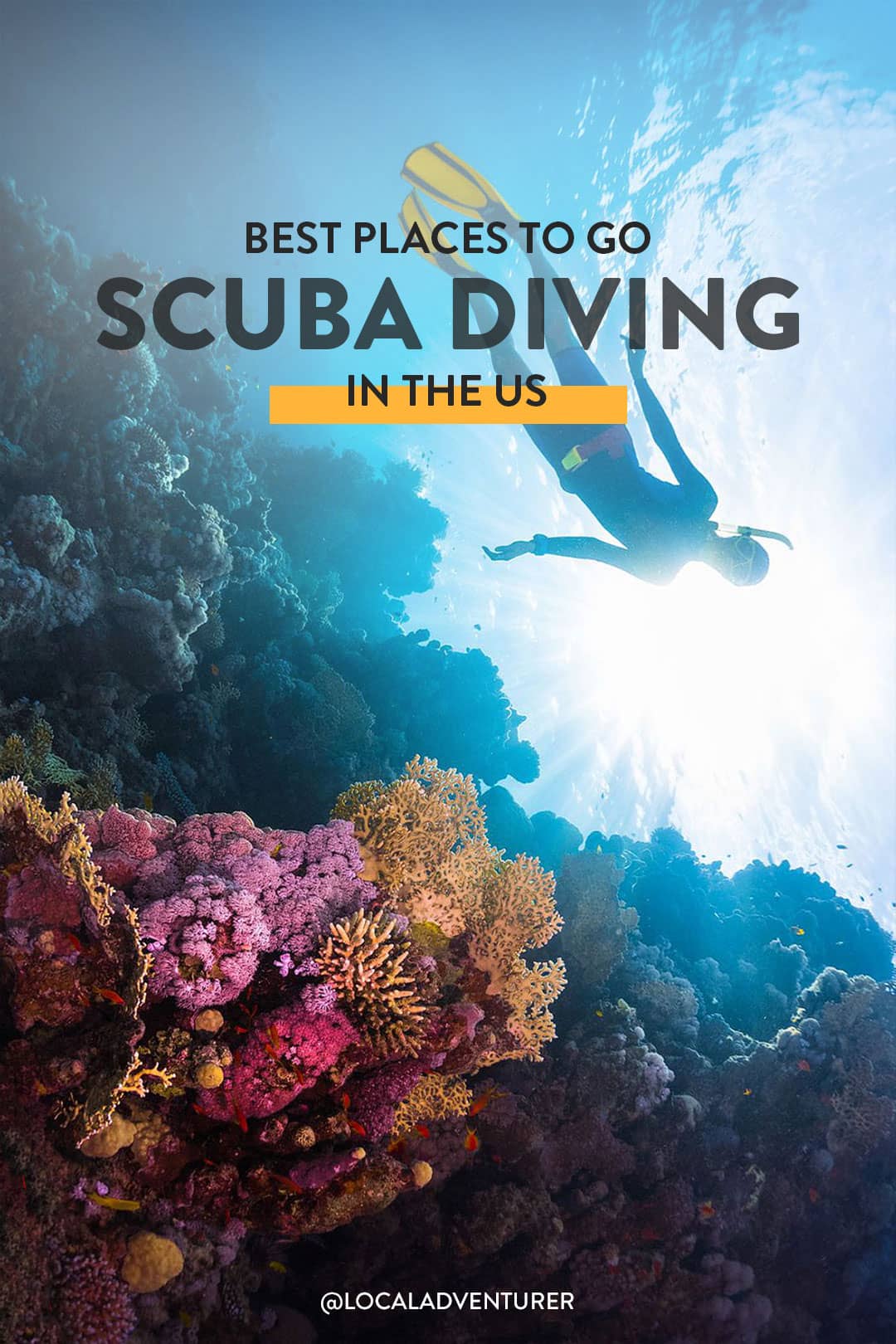
This post may contain affiliate links, where we receive a small commission on sales of the products that are linked at no additional cost to you. All opinions are always our own. Read our full disclosure for more info. Thank you for supporting the brands that make Local Adventurer possible.
Last Updated: December 16, 2021
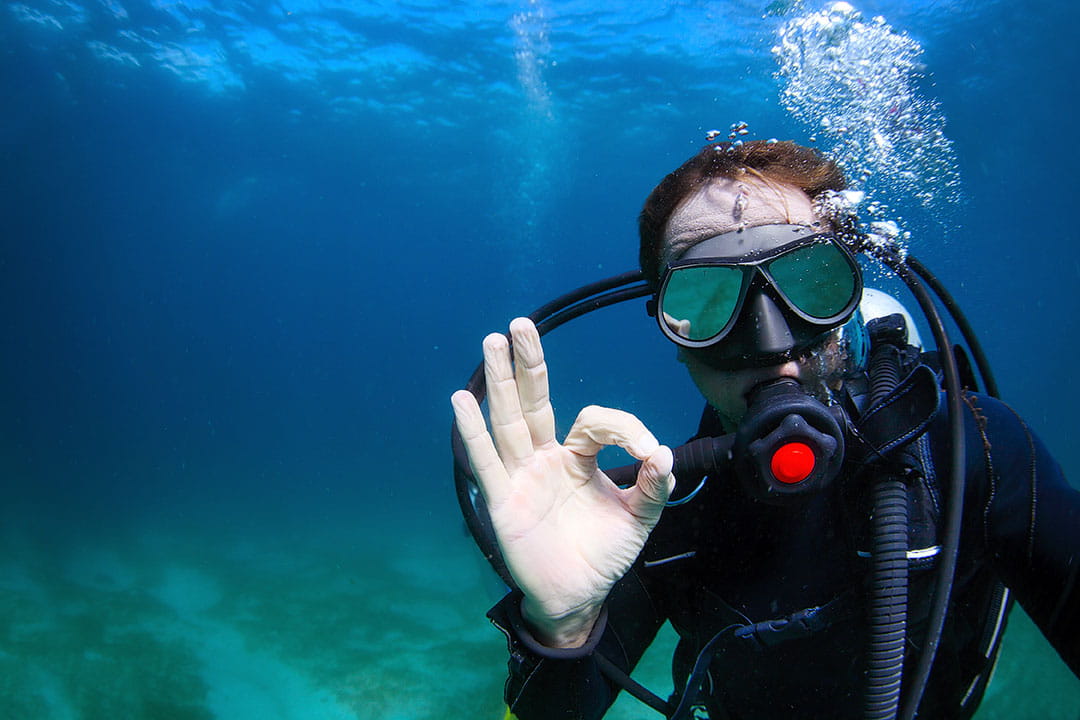
15 Best Places to Scuba Dive in the US
1. Blue Heron Bridge
Riviera Beach, FL, map
Max Depth: 22ft
Average Visibility: 80-90ft (Slack Tide)
Blue Heron Bridge is the most iconic South Florida dive site. Situated in the somewhat unlikely Phil Foster Park in the shadow of metropolitan West Palm Beach, Blue Heron Bridge is an incredibly accessible and rewarding dive for any skill level.
The site features an impressive artificial reef, nearby shallow-water wrecks, and a sheltered sandy bottom, but the real gem is the vast host of ocean life. Macro photographers and invertebrate enthusiasts especially love Blue Heron Bridge, but you can also expect to see larger creatures ranging from the playful mimic octopus to the occasional duo of spotted eagle rays.
Pro Tip: The best time to dive Blue Heron Bridge is high slack tide after the dirty water from the intercoastal has been siphoned out and replaced with fresh rising water. Take full advantage of the still water when it’s clearest!
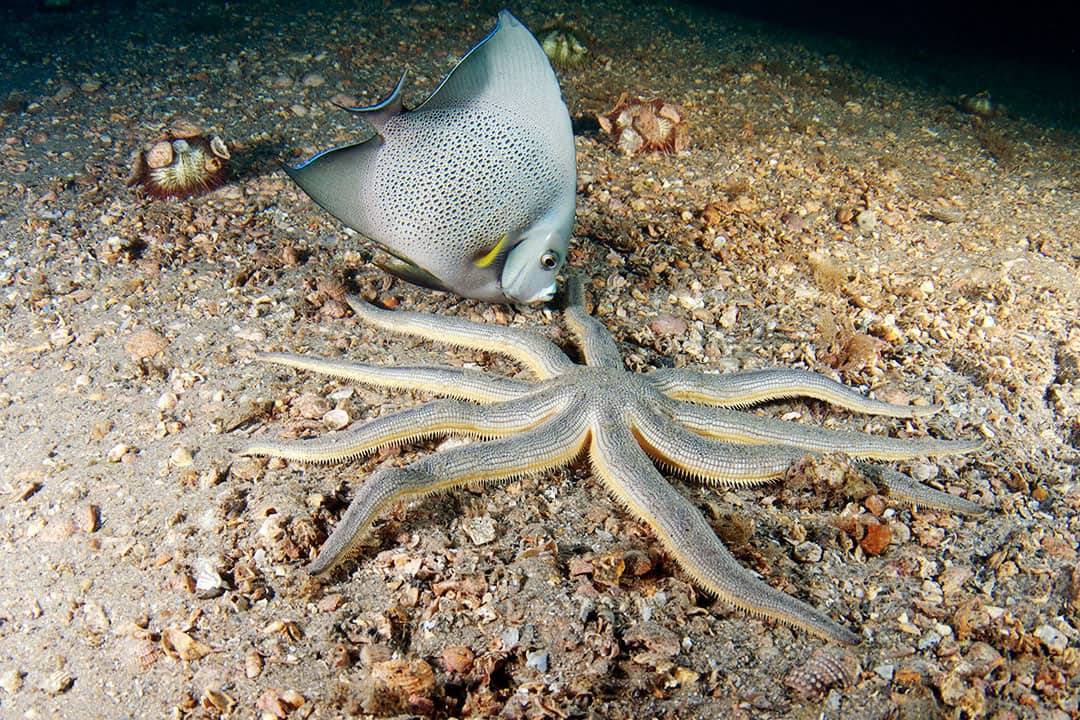
2. USS Oriskany
Pensacola, FL, map
Max Depth: 70ft (island), 145ft (flight deck)
Average Visibility: 80ft
The USS Oriskany is the largest artificial reef in the world. The control tower sits upright in 210 feet of water and juts up from the sandy bottom to a staggering 70ft, well within the depth range of advanced recreational divers. The wreck’s superstructure was prepped for penetration (provided you have the proper training). While the wreck itself is awe-inspiring, the ocean life here is equally impressive.
Being 24 miles off the coast, the USS Oriskany is home just above every kind of creature that lives in Florida coastal waters. Sharks, barracuda, and invertebrates abound, and because of the distance from shore, you also get occasional glimpses at massive pelagic species like manta rays and whale sharks.
Pro Tip: Recreational divers should pay extra attention to their depth while diving the Oriskany. The temptation of the flight deck can quickly pull you much deeper than you may have planned. Staying close to the (relatively) shallow tower can help you more accurately gauge your depth and serve as a reminder to pay extra close attention.
3. Sombrero Reef
Marathon, FL, map
Max Depth: 33ft
Average Visibility: 30ft
Named for the nearby monolithic lighthouse, Sombrero Reef is one of the many living treasures of the Florida Keys. One of 18 Sanctuary Protected Areas, this boat-accessed reef is teeming with schooling fish, as well as a healthy local population of barracuda.
Sombrero Reef is yet another Florida-centric site beloved by photographers due to its relatively shallow depth and decent visibility. Thriving fish population aside, the reef itself draws most visitors to this highly trafficked area. Vibrant colored and dramatically molded hard corals abound, as well as gently waving soft corals like gorgonians and sea fans.
Pro Tip: The site features an exciting-yet-forgiving swim through what the locals call “the arch.” Be sure to give it at least one pass-through for a dramatic view of juvenile tropical fish, invertebrates, and sponges.
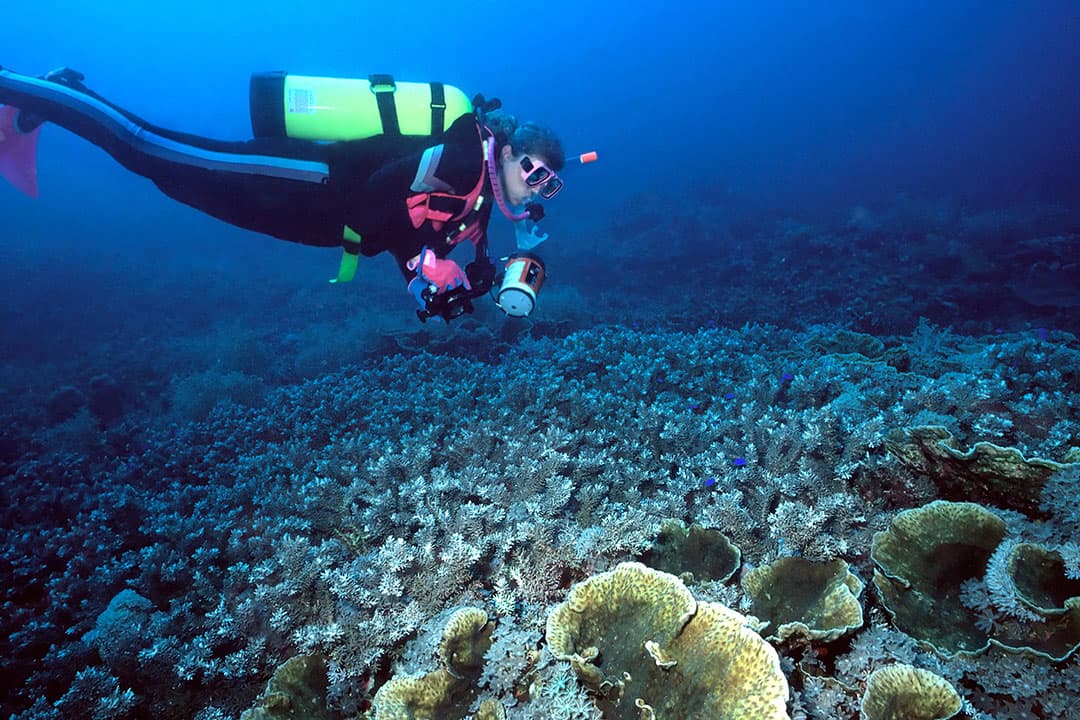
4. Deception Pass
Anacortes, WA, map
Max Depth: 60ft (max recommended)
Average Visibility: 15ft
Deception Pass is a moody, dramatic channel separating Skagit Bay from the Strait of Juan de Fuca. The park is scenic in its own right, but the waters below are the most beautiful in the northwest. Though silt deposits from the Skagit River cloud the visibility, your dive will primarily involve hugging the wall to take in the incredible colors of abundant invertebrate life.
Though it’s possible to access this dive from the shore, don’t be lulled into complacency. Deception Pass should only be attempted by those with a keen eye for reading tides and aware of the specific challenges and hazards in this area. What’s more, the currents are only appropriate for diving a handful of times every year. This is one where you’ll undoubtedly want a local guide with plenty of experience.
Pro Tip: Opting to charter a boat can alleviate some of the current-related challenges of Deception Pass. It’s also a good idea to have a couple of sets of eyes on the water and your bubble trail in case of sudden current shifts.
5. Windjammer Wreck
Dry Tortugas National Park, FL, map
Max Depth: 25ft
Average Visibility: 50-60ft
From both a historical and ecological standpoint, Dry Tortugas National Park is an incredibly unique landmark, and the Windjammer wreck is a microcosm of the park at large. Situated off of Loggerhead reef in just over 20ft of water, the Windjammer Wreck presents an opportunity for new divers to see a wreck or as a wrap-up dive after spending your day at depth.
Just because the wreck is relatively shallow doesn’t mean that you should come in without big expectations–the site is home to impressive specimens of brain coral and a regular hangout spot of some sizable grouper.
Pro Tip: While you might be tempted to hang around the bow wreckage given the recognizable profile and dense tangle of debris and machinery, the debris field containing midship and stern remains is every bit as enjoyable.
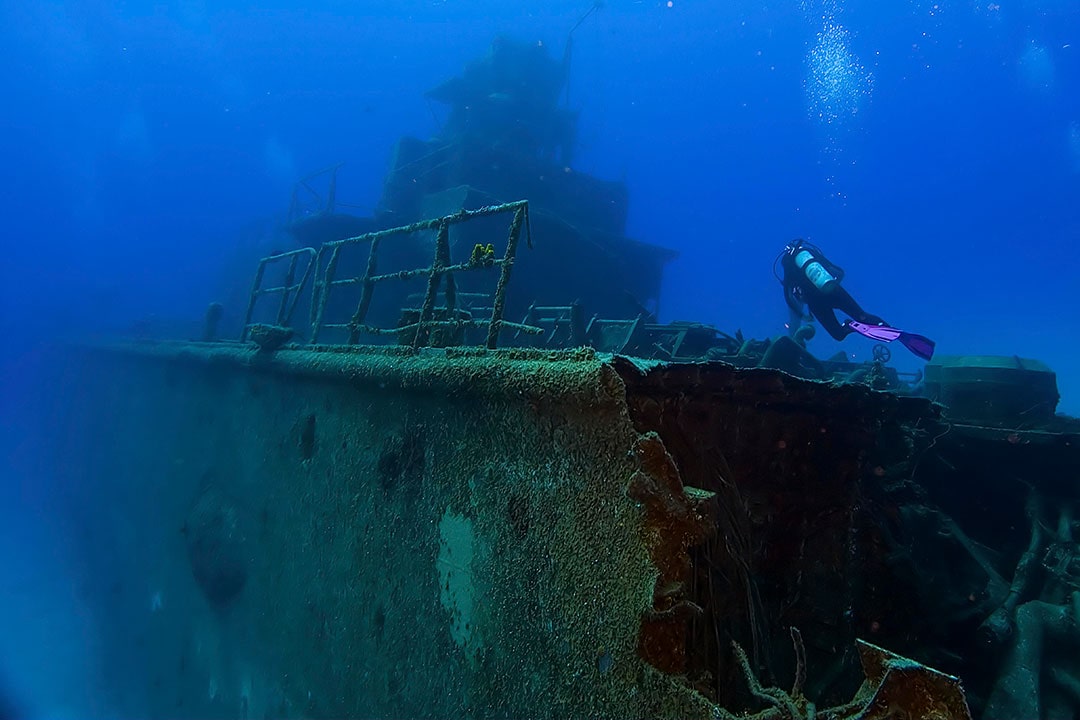
6. Strawberry Wall
Strawberry Island, WA, map
Max Depth: 70-100ft
Average Visibility: 25ft
The San Juan Islands are a marine marvel worthy of anyone’s attention. Several residential orca pods and other prominent species of marine mammal inhabit the waters of this unique archipelago. Due to the currents that regularly sweep between the islands, Strawberry Island’s wall is just one of many fantastic drift dives in the area.
Strong current relegates this dive to the realm of those who have some experience and are comfortable with water pushing them around. Savvy explorers should be rewarded with fantastic views of rich invertebrate life and the occasional impressive wolf eel.
Pro Tip: You can prolong the length of this dive (and get a closer look at exciting features) by doing some boulder hopping to find reprieve from the current, but be careful of upwelling around large rocky outcroppings.
7. Casino Point
Catalina Island, CA, map
Max Depth: 95ft (gradual descent from the shoreline)
Average Visibility: 50ft
Casino Point has been the first open water experience of many a southern California scuba diver that they can return to time and time again as experience grows. This popular snorkel and dive site is well worth the hype–featuring several wrecks and historical artifacts as well as an abundance of sea life.
Though visibility is usually pretty good, the best time to dive at Casino Point is early to mid-fall, when you can have up to 100ft clarity on a good day. Whether you’re exploring the kelp forest or investigating sunken vessels, be on the lookout for sizable (and often curious) native fish, as well as brightly colored invertebrates.
Pro Tip: The biggest drawback of this site is the lack of amenities, particularly pronounced during tourist season. Don’t expect anything but the most dubiously maintained spartan of facilities.
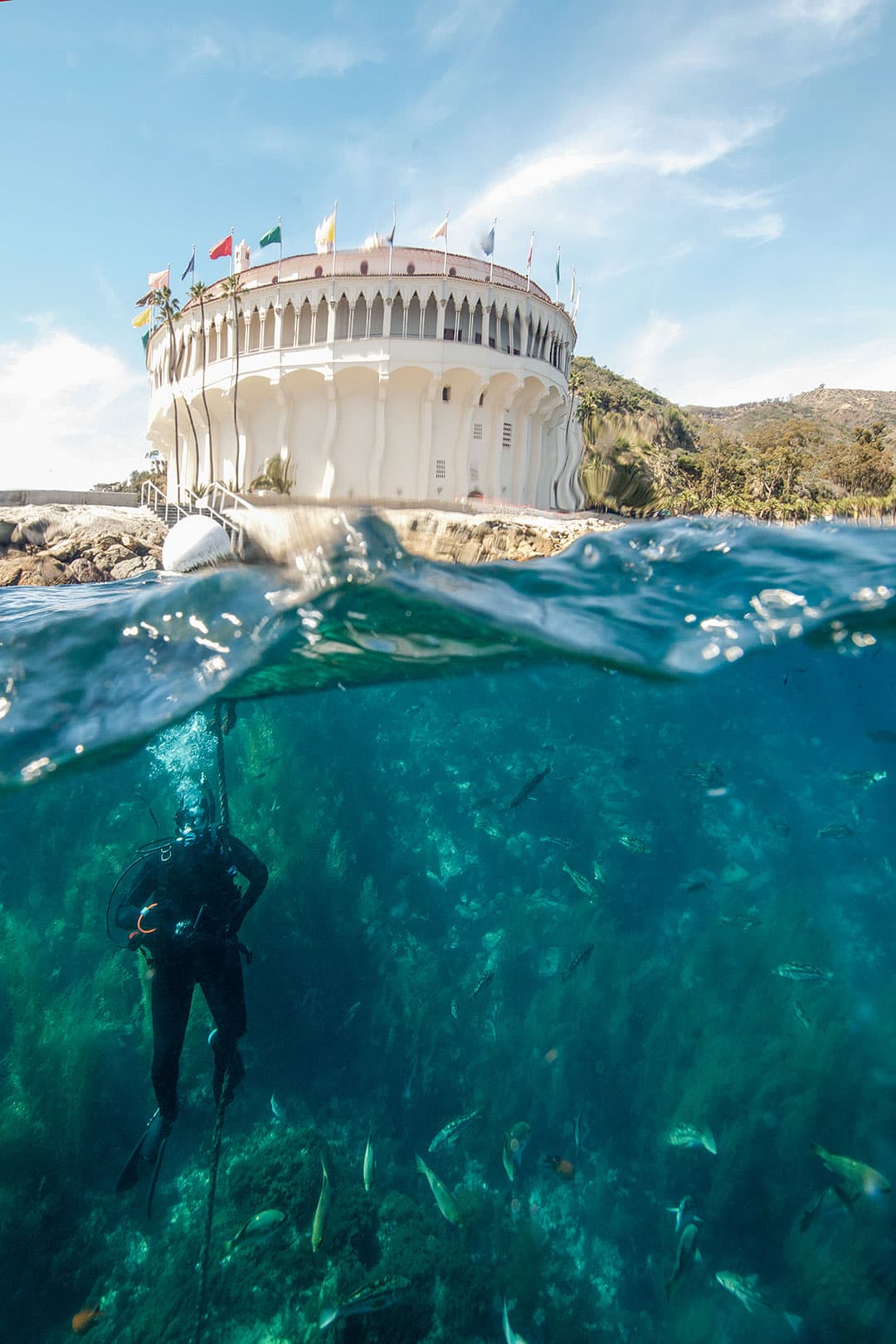
BONUS: Farnsworth Bank
Catalina Island, CA, map
Max Depth: 130ft
Average Visibility: 50ft
Farnsworth Bank is as fine of a pinnacle dive as you’ll find outside the Leeward Islands. Situated about 1.5 miles off of Catalina Island, Farnsworth Bank is beloved by California divers for the richness of its marine life and possibilities for exploration. Strong currents are the norm of its proximity to the open ocean. Be sure that you’re equipped to confidently handle the challenges presented by this stimulating dive.
These spires are teeming with life, particularly vibrant Pacific species such as California purple hydrocoral. Massive morays, nudibranch, and a litany of crustaceans are just a few of the more active species you can expect to find.
Pro Tip: Sharp-eyed divers should keep a lookout for the more dramatically colored variation of scorpionfish who inhabit the spires. Purple and lavender examples aren’t uncommon, nestled among similarly-colored coral.
8. Schoodic Peninsula
Acadia National Park, ME, map
Max Depth: 100ft
Average Visibility: 30ft
Located on the more rugged, less frequented side of Acadia NP, this area is for scuba enthusiasts who want a little adventure with their shore dives. Though certainly off of the beaten path, the Schoodic Peninsula hosts some of the most compelling diving on the East Coast. Because the coastline is often pretty rugged, shore diving should only be attempted when the weather is relatively calm, and there is no surge.
If you make it out to this side of the park, you will be rewarded with both a scenic drive and dive. Flounder, lobster, crab, and nudibranch swarm in the blue, crystalline waters off of the peninsula. There’s an astounding amount of geologic variety to explore as well, ranging from large bouldered bottoms to steep sea walls.
Pro Tip: If you’re concerned with wave activity, the Blueberry Hill site has more protection than other parts of the peninsula, being partially sheltered by Schoodic Island in the distance.
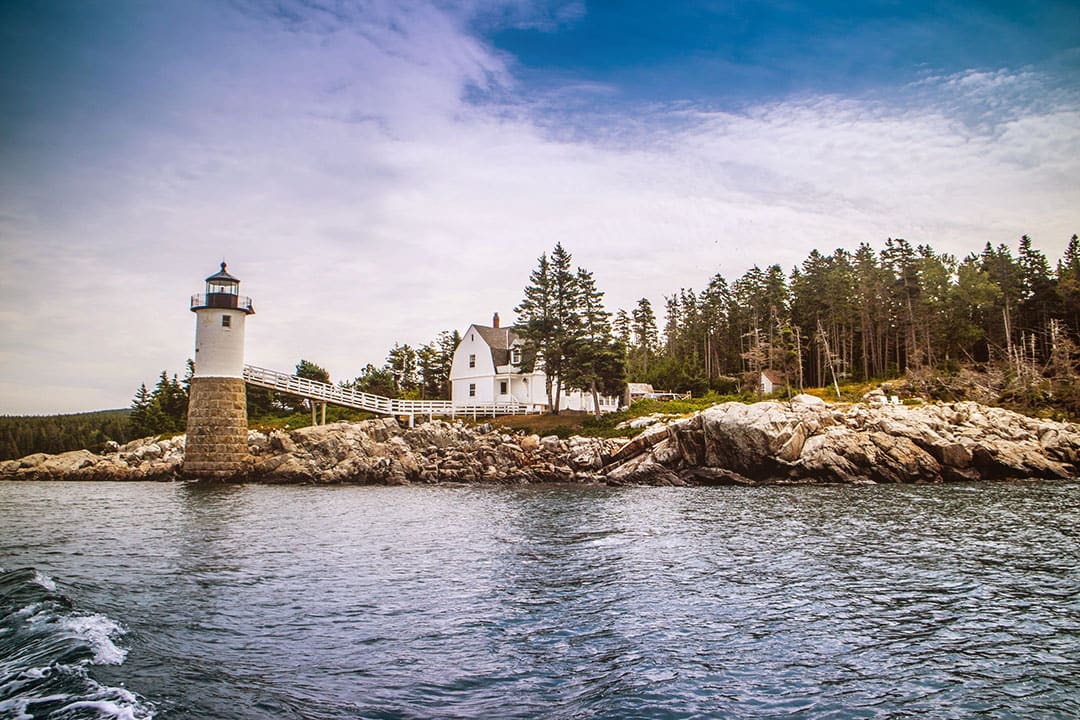
9. USCG Spar
Morehead City, NC, map
Max Depth: 110ft
Average Visibility: 60ft
This decommissioned Coast Guard cutter was stripped out and sunk in 2004. As far as diver-friendly wrecks go, you can’t get much better than this. The 110-foot long vessel is favored because of its (predominantly) upright orientation and clear interior, making it the best scuba diving in the US for aspiring wreck divers to cut their teeth and gain some intermediate experience.
While the interior is fun to explore, the wreck is also famous for its density of sand tiger sharks, angelfish, and other large species like barracuda and amberjack. Any East Coast diver with their Advanced Open Water would be missing out if they didn’t investigate all the Spar and her aquatic residents.
Pro Tip: If you’re interested in diving the Spar, the nearby Aeolus offers similar marine life on a bigger scale.
10. Nubble Lighthouse
York, ME, map
Max Depth: 70ft
Average Visibility: 20ft
Named for one of the famous lighthouses dotting Maine’s spectacular craggy coastline, the Nubble Lighthouse dive is notable for its accessibility compared to most other shore-accessed dives in the NE. Though crowds can quickly get out of hand on weekends, this site is a great early option for those who like to enjoy the play of soft morning light on their dives.
Expect to see the famous oversized claws of the Atlantic Lobster poking out from beneath rocks. Brilliantly colored blood stars and the occasional flounder and cod are also common sightings.
Pro Tip: Though this area is known for its accessibility, things get notably more precarious as the tide goes down. Be sure to check the charts and know your ability level before heading out.
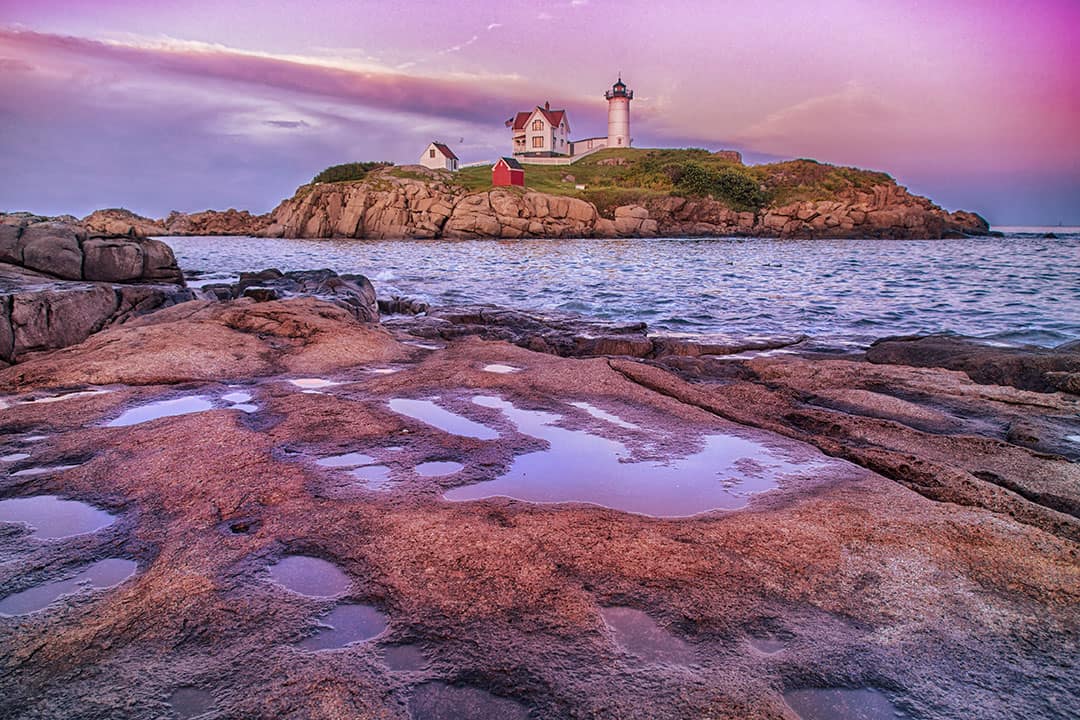
11. Fox Island Spit
Seward, AK, map
Max Depth: 110ft
Average Visibility: 30ft
Resurrection Bay is a far cry from the typical tropical scuba trip–but so are Smitty’s Cove, Prince William Sound, and all of the other ecologically diverse, richly populated dive areas of Alaska. Fox Island Spit is a notable dive because of its rich marine life and easily accessible wreck just feet below the surface.
Logistic intensive as diving in Alaska is, it’s just as often gratifying. Octopi, nudibranch, all manner of large fish, crustaceans, cetaceans, and more are waiting for you to don your drysuit and hop below the surface.
Pro Tip: Fox Island is renowned for its skipping stones and hosts an annual rock skipping competition. There are also a fair number of tide pools to explore.
12. Flower Garden Banks
Coastal Texas, map
Depth: Cap starts at 50ft
Average Visibility: 50ft
A remote, liveaboard accessed trip, Flower Garden Banks is not what you typically think of when you hear “Texas.” These reefs are a marvel of the natural world, sitting atop massive underwater salt domes, and it is possibly the only example of a pristine Gulf reef. Should you own a boat or book the appropriate charter, this trip is well worth the time and money.
This essential Gulf of Mexico marine sanctuary was recently tripled in size, now encompassing 160 square miles of protected space. Aside from stunning coral formations, divers can expect to be treated by hammerhead sharks, manta rays, sea hares, reef fish, and the occasional whale shark.
Pro Tip: Courtesy to both local reef dwellers and your fellow divers is a must here–be sure to follow all regulations to keep this irreplaceable area safe and healthy
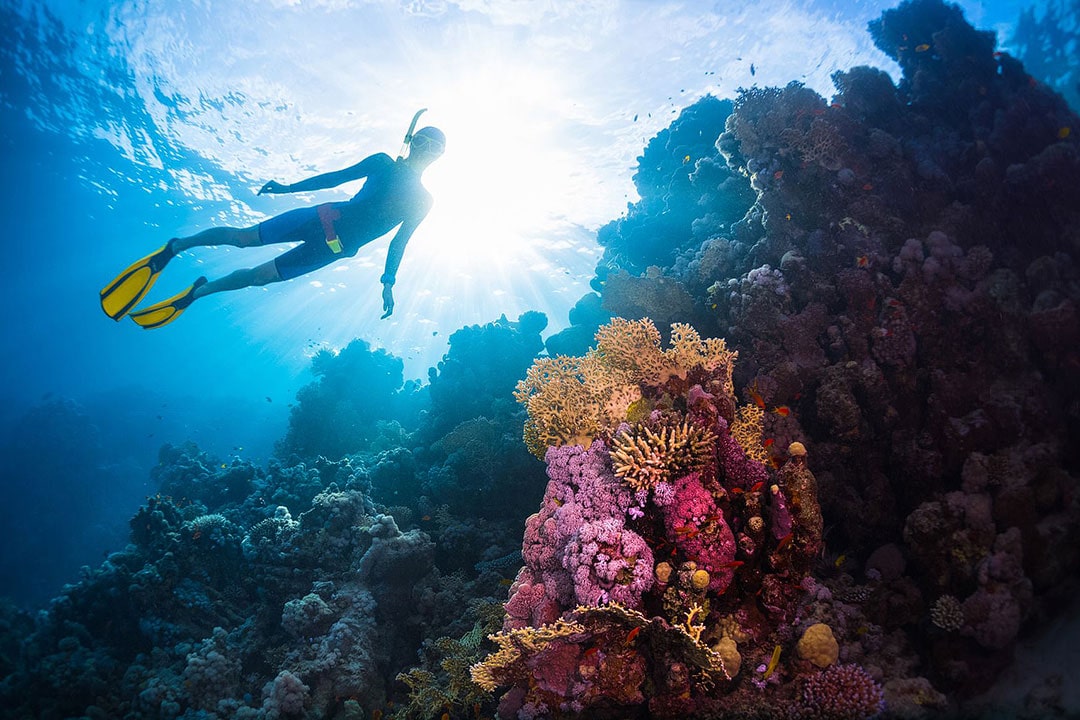
13. Fish Rain
Molokai, HI, map
Max Depth: 100ft
Average Visibility: 60ft
This difficult to access, demanding drift dive is well worth the logistical and physical effort it takes to get into (and out of) the water. After braving the boat ride and (quickly) getting into the water, you’ll be greeted with an array of rare ocean life seldom seen anywhere else in the world. If you’re a shark enthusiast, Fish Rain is one of the country’s premier destinations for shark sightings.
Hammerhead, tiger sharks, whale sharks, endangered monk seal, and more frequent the area. Fish rain presents the opportunity for large-scale glimpses of real pelagic ocean monsters, as well as fine examples of smaller creatures clinging to the current-swept reef.
Pro Tip: Underwater photographers need to bring their cameras on this one. It’s one of the dives that offer the once-in-a-lifetime shots of legendary ocean creatures in a Nat Geo-worthy setting.
14. Second Cathedral
Lanai, HI, map
Max Depth: 50ft
Average Visibility: 80ft
Off the southern coast of Lanai are two famous, submerged lava tube“cathedrals” decorated with craggy rock deposits and gentle, crusting coral. The second Cathedral is the larger of the two, entered via a rooftop cave in which divers descend through to enter the body of the tube. This cavernous dramatic dive site has several swim-throughs and a large main chamber slightly larger than the first.
For the best experience, be sure to time your dive around midmorning since this allows sunlight to pour through the roof of the chamber, casting down rays of heavenly light that refract through the water. As is often the case in Hawaii, both Cathedral sites are teeming with life, ranging from colorful miniature shrimp to sizable trumpet fish and eels.
Pro Tip: It’s worth bringing a light along on this dive, even if you’re on a midday excursion. There are many different cracks and crevices along the walls and floor of the lava tube hiding where worthwhile critters like to lurk.
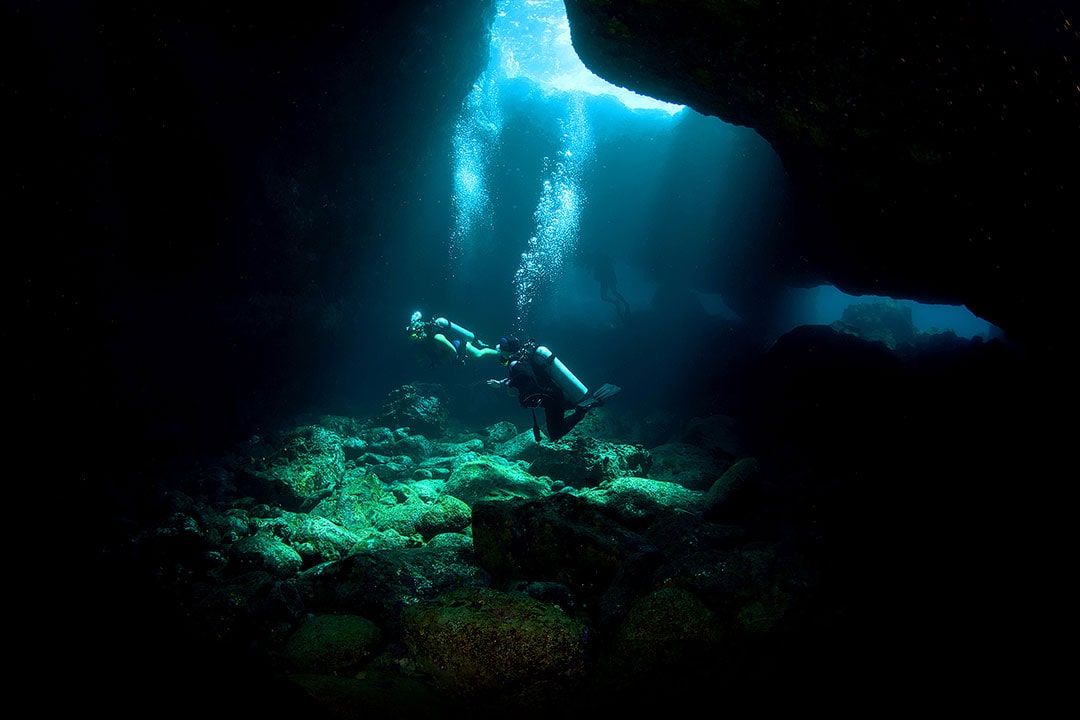
15. YO-257 Wreck
Oahu, HI, map
Max Depth: 100ft
Average Visibility: 60ft
Yet another great, diver-ready artificial reef, the YO-257 has been hosting high-profile marine life on the ocean floor since 1989. Though this 147ft long Navy oiler is relatively deep for freshly certified deepwater divers, the strain of access is somewhat alleviated by a dependable descent line rigged to the mooring balls surrounding the wreck.
The structure has plenty of holes punched into it for easily managed swim-throughs and adding another dimension of exploration to the superstructure. Be on the lookout for moray eels hiding amongst the debris, as well as white tips sharks, octopus, and resident invertebrates clinging to the coral.
Pro Tip: Atlantis Submarines has been known to frequent the area. You might get the surreal experience of gaping at folk in a crowded sub gaping right back at you as if you were one of the fish.
Map of the Best Scuba Diving in USA
Tips for Scuba Diving
- Get certified before heading to an amazing dive location. You don’t want to waste time learning to dive when you could be enjoying it.
- Hire a guide to make the most of your diving trip since they know the area best.
- Be sure you are aware of what dive certifications are required at each location to see the best of each spot.
- When looking for a dive shop, look through reviews. Don’t simply book the cheapest place. You want to be sure they know what they are doing and don’t cut corners.
- Communicate with your divemaster. If you’re new to diving or have any concerns, let your divemaster know beforehand.
What to Pack for a Scuba Diving Trip
Most dive shops can provide everything you need but there are a few things that we always like to have.
- Snorkel + Mask (His + Hers) – It’s nice to have one that fits you well and only your mouth has been on.
- Fins – Ones that fit you well are also helpful. For cold water dives, they suggest larger fins.
- Snorkel Bag – Good to have to organize and carry all your gear.
- Rash Guard (His + Hers) – For extra protection against the sun and to make it easier to slip into a wetsuit.
How many of these dives have you done? Can you think of any other spots that are worth calling the best scuba diving in USA?
Did you enjoy this post? Pin it for later
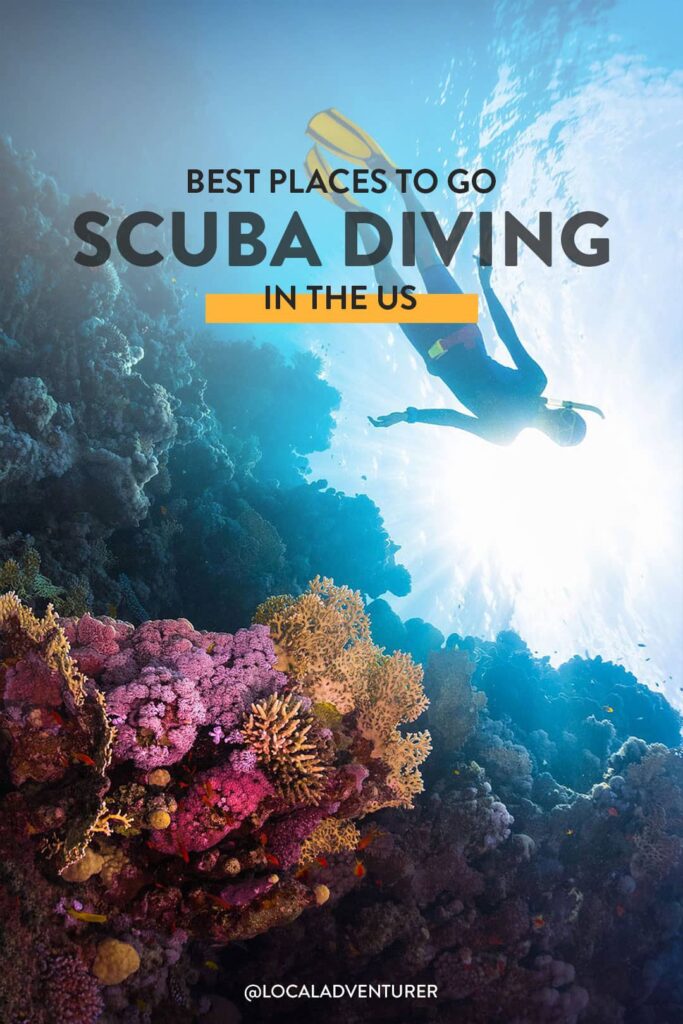
SEE MORE USA GUIDES
⟡⟡⟡⟡⟡
“Discovery consists not of seeking new lands but in seeing with new eyes” – M. Proust

Hunter Bierce
Hunter Bierce has been diving for 15 years and got his initial PADI Open Water Instructor certification at 19. Since then, he’s taught in both the balmy waters of the Caribbean and the frigid-yet-fruitful shorelines of Puget Sound. He currently lives in the Pacific Northwest, splitting time between the deep and the steeps.
You might also love
The post Your Guide to the Best Scuba Diving in USA appeared first on Local Adventurer » Travel Adventures in Las Vegas + World Wide.

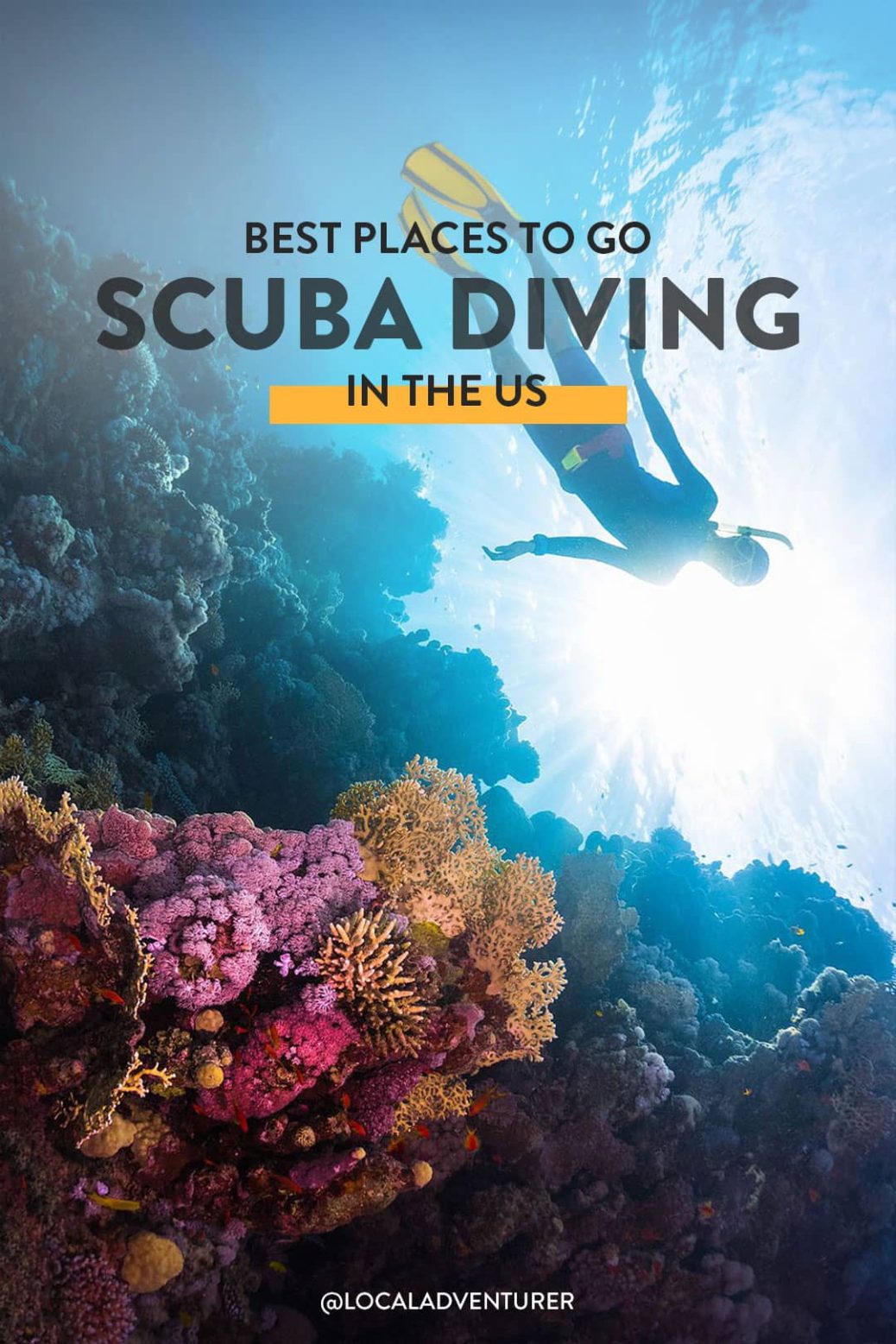
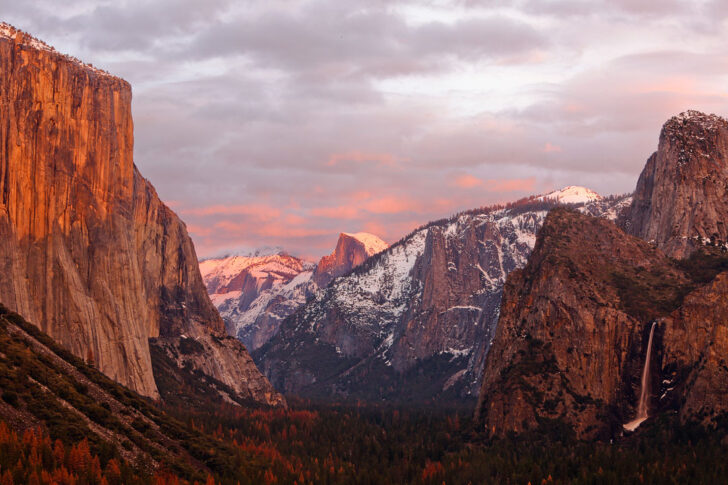
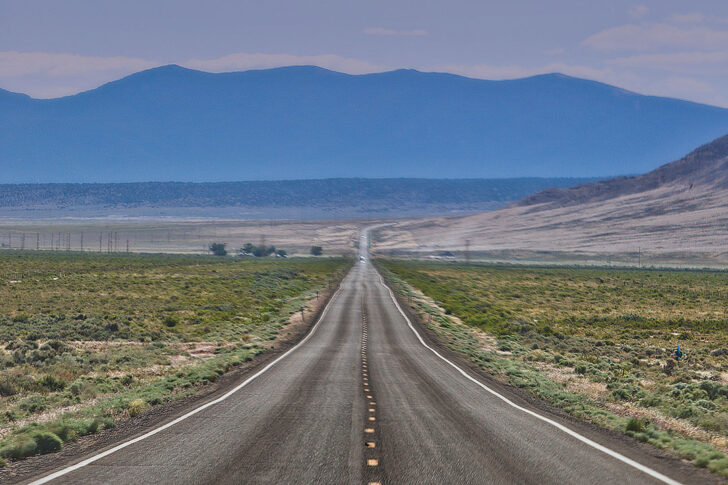
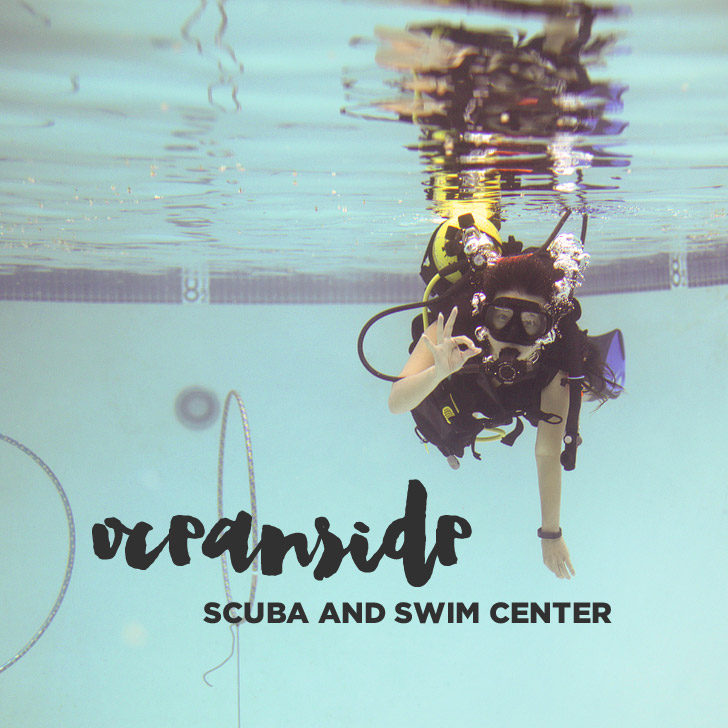
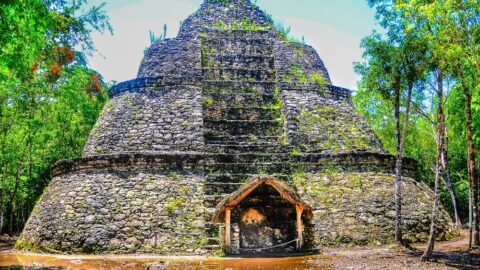
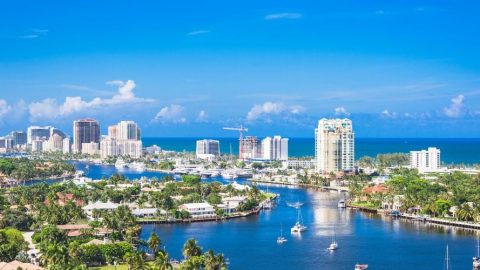

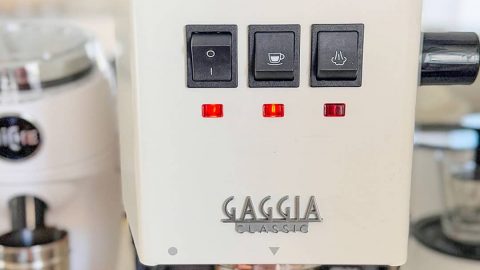

Recent Comments